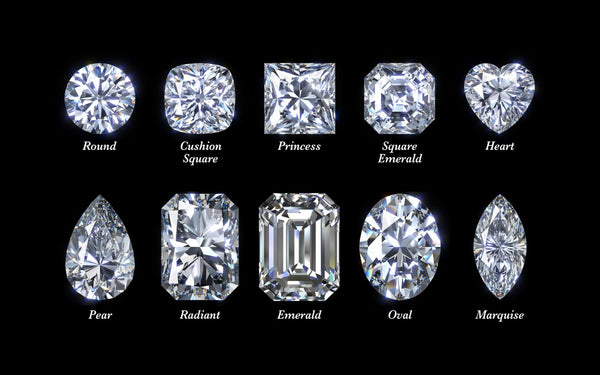Glossary

BRILLIANCE
Brilliance is what makes a diamond ‘sparkle’. When white light shines on the diamond, a luminescent reflection is seen. A correctly cut diamond increases the reflection of the light and has a maximal brilliance.
BRILLIANT CUT
A round diamond with 57 facets that are arranged in a certain way, has an optimal brilliance and light reflection.
CLOUD
A cluster of very small internal inclusions. Tiny clouds will not interfere with the stone’s brilliance, but a cluster of clouds will.
CULET:
A culet is the bottom facet of a diamond. It is best to have a small or medium sized culet. A large culet will let the light escape, instead of reflecting it. When there is no culet, the bottom of the stone will chip easily.
DEPTH:
The depth of a diamond is measured from the culet at the bottom, to the table facet at the top.
DEPTH %:
The depth percentage is the height of the diamond (measured from the culet to the table) divided by the width. The depth is crucial for an optimal brilliance and fire. When the depth percentage is too low, the diamond will loose its sparkle because the light is leaking out.
EYE-CLEAN:
An eye-clean diamond is flawless to the naked eye, meaning it has no visible inclusions. Diamonds with a SI-1 grade or better are usually eye-clean.
FACET:
Facets are the flat, polished surfaces on a diamond.
FIRE:
A diamond’s fire, also called refraction or dispersion - is the coloured light that is reflected from within. When white light enters the stone, it is broken down into all the colours of the rainbow, because the diamond acts like a prism. Only a diamond with perfect proportions can have good fire.
FLUORESCENCE:
Certain diamonds disperse a bluish glow when exposed to ultraviolet light. A diamond should not have strong fluorescence, but faint or moderate fluorescence does not affect the diamond’s look. Some customers prefer a faint fluorescence, because it balances the yellow colour of some of the less expensive stones.
GIRDLE:
The girdle is the narrow band around the diamond’s outer circumference. It is usually the place where the setting holds the diamond. The girdle can be rough or polished, but either is good because it doesn’t affect the overall beauty of the stone.
INCLUSION:
Inclusions are internal imperfections in a diamond, such as a spot or irregularity. Irregularities can include a fracture, a smaller diamond inside the bigger one, included liquid etc. In SI-3 clarity diamonds (or lower quality) the inclusions can be seen with the naked eye. In higher quality stones the inclusions are only visible under magnification. The fewer the inclusions, the better the clarity grade, the rarer the stone and the higher the price.
MAKE:
A diamond’s make is the quality if its finish and proportions. A good make will enhance a stone’s brilliance and fire. A poor make will decrease the stone’s sparkle and fire.
PAVILION:
The pavilion is the bottom half of the diamond, from the lower girdle to the culet. If the pavilion is too deep or not deep enough, light will leak out of the diamond and it will loose fire and brilliance.
POINT:
A point is a means to express the weight of a diamond. One point is 1/100th carat. A diamond that weighs 0.50 carat weighs 50 points.
POLISH:
A diamond is given a grade for its finish, from poor to excellent. The polish is very important, because a good polish can enhance the stone’s fire and brilliance. It takes a trained eye to differentiate between the different grades.
SPARKLE:
Sparkle or scintillation is the amount of light that is reflected from the diamond as it moves. It is the combination of fire and brilliance.
SYMMETRY:
A diamond is given a symmetry grade for its overall cut uniformity. The symmetry grade can go from poor to excellent. Poor symmetry will decrease a diamond’s sparkle and fire, because the light is leaking from the stone.
TABLE:
A diamond’s table is its top facet. If the table is too small or large, this will influence the overall proportions, brilliance and fire.
TABLE %:
A diamond’s table width % is the width of the table, divided by its total diameter. It is a crucial parameter for a diamond’s sparkle.




